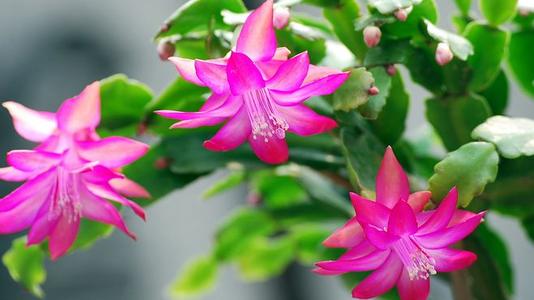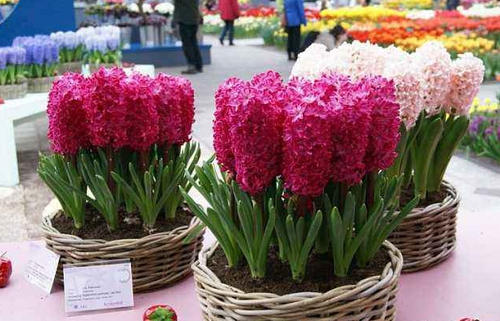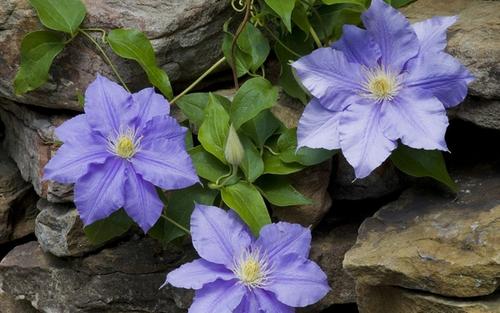7 flowers propagating in winter
Written by Maggie
Jan 18 2021

Each flower has different sowing time. Generally suitable for winter planting flowers have devil's ivy, spider plant, Asian virginsbower, hyacinth, Florist Kalanchoe, tulips, Schlumbergera truncata. The cold tolerance of these flowers are different, they are suitable for growing in the winter, and can make its seed germinate in the soil. The following are 7 flowers propagating in winter.

1. Propagating Devil's ivy in winter
The Devil’s ivy has a strong cold resistance. It can be potted in the indoor maintenance, usually can be given the cuttage propagation. In fact, it can also be sowing propagation in winter, but we need to control its temperature at more than 15℃, so as to make the green carotene seeds root and germinate.
2. Propagating Spider plant in winter
Spider plants have a strong ability to adapt to the environment. Usually, it can also be sown in winter with seeds. However, if the seeds are sown in low temperature in winter, it will be difficult for its seeds to take root and germinate, and the temperature should be maintained between 18 and 22℃.
3. Propagating Asian virginsbower in winter
When it comes to what flowers are propagated in winter, Asian virginsbower have a lot of different varieties, and some of them are particularly strong in cold resistance. In fact, it can be sown in winter, but the survival rate is not as high as that of sowing in spring and autumn. Usually, sowing in winter needs to be shed for maintenance.
4. Propagating Hyacinth in winter
Hyacinth generally can withstand the low temperature of 5℃. Usually in winter it is difficult to frostbite. In winter with seeds sowing, it is necessary to put hyacinth seeds into warm water to soak germination, otherwise hyacinth seeds will be difficult to germinate, but also very easy to frostbite plant seedlings.

5. Propagating Florist Kalanchoe in winter
Florist Kalanchoe is a relatively common flower in China. Even if it does not blossom at ordinary times, it also has a very high ornamental value. And the cold resistance of longevity flowers is relatively strong compared with most of the plants.
6. Propagating Tulips in winter
Tulips are particularly strong in cold and drought resistance. Generally, they can be sown and propagated in winter, but they need to be planted in mild sunshine and the ambient temperature should be controlled above 10℃, so that the seeds can germinate, otherwise the seeds will not germinate.
7. Propagating Schlumbergera truncata in winter
Generally, Schlumbergera truncata is widely distributed in northern China. It also uses seeds to sow and propagate in winter when the temperature drops gradually, but the survival rate is higher than that of sowing in spring and autumn.

Latest Updated
- Benefits of Bugleweed - 7 Science-backed Health Benefits
- Bugleweed Dangers & Side Effects - Is It Poisonous?
- How to Plant Evergreen Trees - What You Should Know
- When to Plant Evergreens - Grow Guide for Evergreen Trees
- 12 Wonderful Evergreen Shrubs for Your Garden
- 12 Popular Evergreen Plants with Pictures for Beginners
- When And How To Prune A Lilac Bush Like a Pro
- How to Grow & Care for Lilac Vine (Hardenbergia Violacea)
- Japanese Lilac Tree (Syringa Reticulata) Care & Propagation Guide
- Shumard Oak Pros and Cons - What to Know
Popular Articles
- Winter maintenance of Antirrhinum Majus
- How to Grow Terminalia Mantaly Tree
- How to Grow and Care for Crossostephium Chinense
- How to grow Antirrhinum Majus in spring
- Peristeria Elata (Dove Orchid) Profile: Info & Care Guide
- Underwatered Snake Plant (Sansevieria Trifasciata) - Signs And How To Fix
- How to Care for Brazilian Jasmine Plant (Mandevilla Sanderi)
- How to Grow & Care for Graptopetalum Purple Delight in Summer
- Rosa Chinensis (China Rose): Plant Growing & Care Tips
- How to Care for Baby Sun Rose (Aptenia Cordifolia)